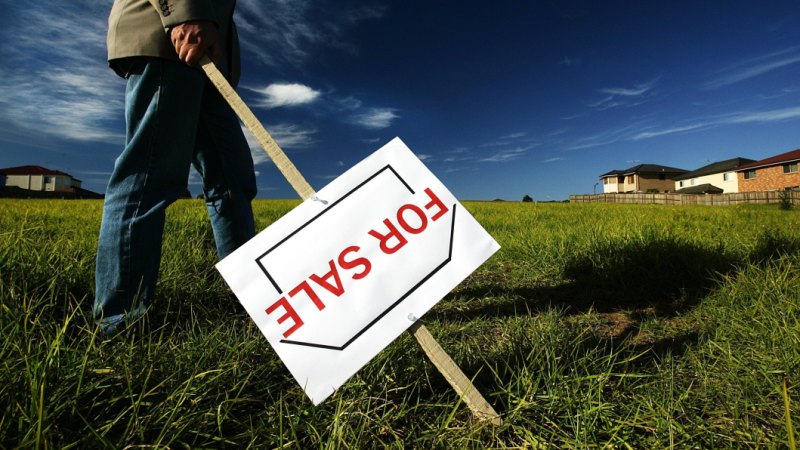
“The peak-to-trough decline in prices is more than 8 per cent, worse than the GFC and near the largest for at least 55 years when Real Estate Institute data for Sydney started,” he said.
“Looking ahead, we expect price falls to reach 14 per cent, causing a negative wealth effect on consumption.”
In Sydney, house values dropped 0.8 per cent in April to be down by 11.8 per cent over the past 12 months while in Melbourne they fell by 0.7 per cent last month to be down 12.6 per cent over the past year.
Overall dwelling values in Sydney dropped by 0.7 per cent to be 10.9 per cent lower over the year. Since their peak in September 2017, Sydney dwelling values have fallen by 14.5 per cent.
In Melbourne, dwelling values dropped by 2.6 per cent to be 10 per cent down over the past 12 months. They have fallen by 10.9 per cent since their peak.
Loading
Every capital city except Canberra suffered a fall in house prices last month with Hobart, which had been the nation’s strongest market, seeing a 1.2 per cent drop in April.
Canberra, where values lifted last month, and Hobart are the only two capitals where prices are still growing above the inflation rate on an annual basis.
CoreLogic research director Tim Lawless said despite the fall there were signs that the bottom of the market had been reached.
“Values are still broadly declining, however the pace of decline has moderated since December last year and there are some tentative signs that credit flows have improved, albeit from a low base,” he said.
Loading
“Although the rate of decline has moderated, we are still seeing values falling across most regions of Australia and any recovery in dwelling values is likely to be a long-term outlook.”
The data comes ahead of next week’s Reserve Bank board meeting where the issue of an interest rate cut is set to be debated.
ANZ chief executive Shayne Elliott, announcing the bank’s half-year results, revealed there had been a lift in the number of customers falling behind in their mortgages and noted that 5 per cent of borrowers were now facing negative equity on their property.
He said the sluggish property market and low wages growth meant more people were getting into financial hardship which a small rate cut may alleviate.
“Maybe it will just give a bit of juice into the economy, and get a bit more employment, and put a bit of money back into people’s pockets. And what would that do? Well, it would mean people have a little bit more to spend, it would mean that those customers who are struggling in terms of their mortgage would probably get a bit more breathing space,” he said.
Loading
AMP Capital chief economist Shane Oliver said there were no signs of panicked or forced selling that would have driven prices even lower.
He said tighter credit standards and Labor’s policies around negative gearing and capital gains tax could be put further downward pressure on prices next year.
“With growth slowing and inflation coming in weaker than expected, rate cuts are likely to come earlier than our previous expectation for cuts in August and November, with the first cut probably coming next week,” he said.
Shane is a senior economics correspondent for The Age and The Sydney Morning Herald.
Clancy Yeates is a business reporter.
Most Viewed in Business
Loading








